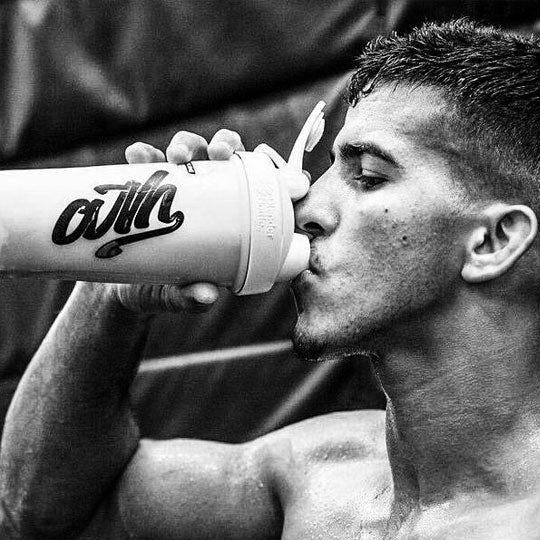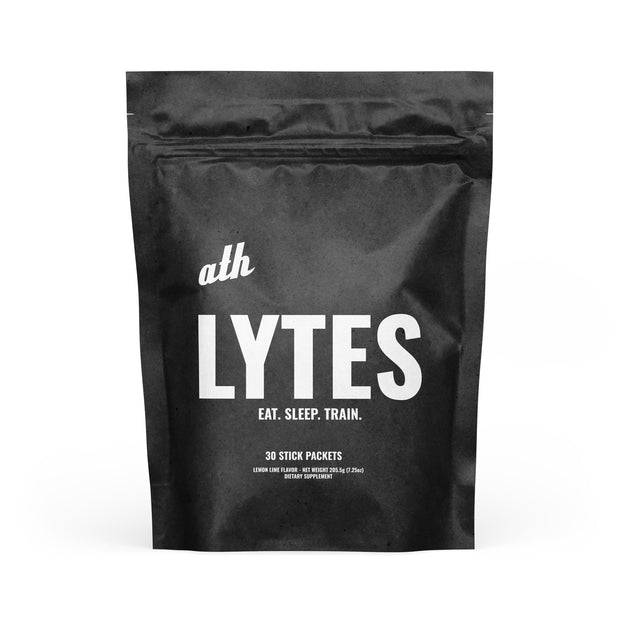Our editorial team is made up of subject matter experts with extensive, real-world clinical experience who are highly trained in evaluating clinical research. Read more about our editorial policy here.
Is Sodium Bad For You? The Facts Backed By Science

Salt often gets a bad rap!
Why?...because, according to the United States Government, consuming too much can increase the risk of heart disease, high blood pressure, and even stomach cancer.
But is sodium really bad for you?
Recent research suggests that very low sodium diets may not be beneficial, and salt may not have the detrimental impacts on our health that we are led to believe.
In this article, we’ll be breaking down the current research on sodium and discussing if it is actually bad for your health.
KEY TAKEAWAYS:
- We need sodium to maintain fluid balance, support cognitive functions, conduct nerve impulses, and relax and contract muscles.
- Despite current recommendations, there is no solid evidence to suggest that sodium causes heart disease or high blood pressure in healthy individuals.
- The “sweet spot” for sodium intake is 5,000 milligrams. Endurance athletes and heavy sweaters may need even more.
SODIUM AND SALT INTAKE MYTHS
Proponents of reduced-sodium diets often claim that eating salt is just about the worst thing you can do for your health.
They often say:
- Sodium Is Bad For You
- Sodium Causes High Blood Pressure
- Sodium is Bad for Heart Health
- Low Sodium Diets are Ideal for Healthy Living
But do we have solid evidence to support these claims?
Let’s dig into the research to find out!
MYTH 1: SODIUM IS BAD FOR YOU
Over the past few decades, sodium has gained an awful reputation. It dates back to the 1960s when a researcher named Lewis Dahl discovered that rats who consumed high amounts of sodium developed hypertension (high blood pressure).

The problem is that he gave them the human equivalent of 500 grams (50,000 milligrams) of sodium, which is MUCH more than what most Americans consume daily.
In response to this low-quality evidence, in1977, the U.S. Senate’s Select Committee on Nutrition and Human Needs issued a statement suggesting that Americans reduce their salt intake by 50-85% to 3 grams per day.
MYTH 2: SODIUM CAUSES HIGH BLOOD PRESSURE
Sodium has long been vilified as the culprit of high blood pressure. As many of us know, high blood pressure places you at a greater risk for heart attack, stroke, chronic kidney disease, and even vision loss. Certainly, we want to do everything we can to avoid those issues.
However, the current recommendations are primarily based on the literature mentioned above or studies done on people who already have high blood pressure.
Over the years, numerous studies have examined the relationship between high salt intake and poor health. At best, studies have found that reducing salt may cause a minimal reduction in blood pressure.
For example, one large 1988 study called Intersalt looked at the relationship between blood pressure and electrolyte excretion in 10,079 men and women between the ages of 20 and 59. Researchers found no association between sodium intake and hypertension.
Interestingly, they also found that those who consumed higher amounts of salt (~ 14 grams per day) had lower blood pressure than those who ate lower salt diets (~ 7.2 grams per day).
Another 2020 review from the Cochrane Library found that dietary sodium restriction led to a very minimal 0.44 mmHg reduction in blood pressure in those with normal blood pressure.
Researchers also found that the potential side effects of sodium restriction were more significant than their impact on blood pressure. For example, they discovered that low-sodium diets could increase cholesterol levels by 2.9% and triglyceride levels by 6.3%.
Elevated triglyceride levels are linked to an increased risk of heart diseases, including heart attack and stroke.
MYTH 3: SODIUM IS BAD FOR HEART HEALTH
Although many health organizations tell us to consume less sodium to decrease our risk for heart problems, newer studies dispute these findings.
Here’s what the studies say:
- One research study from the Journal of the American Medical Association (JAMA) found that an intake of fewer than 3,000 milligrams of sodium increases a person’s risk of dying from heart disease.
- Another 2011 review of studies published in the American Journal of Hypertension found that sodium restriction does not decrease heart disease or death risk.
- In 2018, another review published in the JAMA found weak evidence to support reducing salt intake for heart failure.
MYTH 4: YOU SHOULD LIMIT SODIUM INTAKE FOR IDEAL HEALTH
According to the 2020-2025 Dietary Guidelines for Americans, healthy adults should consume no more than 2,300 mg of sodium daily. This is equivalent to about one teaspoon of table salt.
It is estimated that the average American consumes 3,400 mg of sodium per day (1.5 teaspoons of table salt).
Based on current research, the only populations that may benefit from reduced sodium intake are those who are salt-sensitive or have underlying health conditions. Even then, research remains mixed.
One recent study from 2019 published in the journal Nutrients suggests using caution before reducing the sodium intake of the general population.
While it may benefit those with existing blood pressure issues, there isn’t enough research to show how the remainder of the population benefits from lower sodium intake.
Findings conclude that, until we have more evidence, sodium restrictions should be limited to those with a very high sodium intake and diagnosed with hypertension.
According to the Centers for Disease Control and Prevention, most of the sodium consumed by Americans comes from ultra-processed foods and restaurant foods, both of which are linked to poor health outcomes.
So, instead of putting down the salt shaker, aim to consume less processed foods and more nutrient-dense, whole foods for ideal health.
THE SWEET SPOT FOR SODIUM INTAKE
Although healthy, active people shouldn’t restrict their sodium intake, it doesn’t mean that you should consume copious amounts every day.
A 2021 review summarizing years of research on sodium found that the sodium “sweet spot” is between 3,000 to 5,000 milligrams per day for healthy individuals.
And this doesn’t even consider how much sodium athletes lose through sweat. The American College of Sports Medicine recommends that endurance athletes consume a minimum of 300-600 milligrams of sodium per hour during prolonged training sessions. Those who are “salty sweaters” may need double this amount.
In fact, one study found that active individuals can lose as much as 10 liters of water and 7,000 milligrams of sodium each day.
It is important to note, however, that some people are more salt-sensitive than others. People who are sensitive or have existing blood pressure issues may benefit from a lower sodium diet.
SYMPTOMS OF TOO LITTLE SODIUM

Low sodium, also known as hyponatremia, occurs when sodium concentrations in the blood are lower than normal. The condition is much more common than we realize, especially in athletes.
In addition to marathon runners, studies suggest exercise-associated hyponatremia (EAH) has been observed in hikers, climbers, kayakers, and other endurance athletes.
One of the leading causes of EAH is overhydration. This occurs when athletes chug excessive amounts of water during or after training without properly replenishing sodium, resulting in a decreased blood-sodium concentration.
It’s essential to be aware that electrolytes lost through sweat cannot be replaced with water alone. During lengthy bouts of training, a sports beverage or electrolyte replenishment powder containing sodium and potassium is crucial.
The symptoms of hyponatremia range from mild to life-threatening. They include:
- Nausea
- Fatigue
- Muscle Cramps
- Confusion
- Seizures
If caught in the mild stage, hyponatremia can be quickly reversed by drinking an electrolyte beverage. Unfortunately, when the symptoms occur, many individuals begin to drink more water without replenishing sodium and other critical electrolytes, which only makes the symptoms worse.
SYMPTOMS OF TOO MUCH SODIUM
Although endurance athletes need to consume more sodium than sedentary individuals, excess sodium consumption can cause unpleasant side effects.
If you’re sprinkling table salt on everything you eat and drinking electrolyte replenishment beverages around the clock, you may be going overboard.
Symptoms of consuming too much salt include:
- Swollen Hands or Feet
- Extreme Thirst
- Headache
- Bloating
- Frequent Urination
REMINDER: YOU NEED SODIUM
The human body requires sodium to maintain fluid balance and cognitive function. It is also necessary to transmit nerve impulses and regulate muscle contraction.

Although current guidelines recommend restricting daily sodium intake to 2,300 milligrams, no strong research supports these recommendations.
In fact, current literature suggests that we need nearly double this amount. Active individuals may need even more than that to avoid exercise-associated hyponatremia and the potentially severe side effects that come with it.
Furthermore, research says sodium restriction can do more harm than good in healthy individuals.
BOTTOM LINE
TLDR;
Despite health messages telling us to drastically slash our sodium intake, current research doesn’t support telling millions of Americans to do so.
To avoid a sodium deficiency, current sodium recommendations should (literally) be taken with a grain of salt by healthy, active people.
Just as athletes and active individuals need more calories and protein, they also need more sodium, chloride, potassium, and magnesium to replace what is lost through sweat.
It’s important to find your “sweet spot” and avoid over consuming or under consuming sodium to keep your systems running as efficiently as possible.
Our LYTES uses a combination of sodium, chloride, potassium, and magnesium to delay fatigue and keep you training longer, harder, and smarter.



